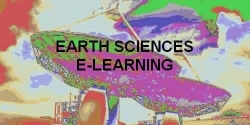Water Quality
Water Quality
back to Contents of Entire Course...
Environmental Law
Benefical Uses of Water
Major Elements that make up
living tissue
Other important, minor elements
Karst Topography
Residence Time
Water Quality
adapted to HTML from lecture notes of Prof. Stephen A. Nelson Tulane
University
Environmental Law
- Riparian Doctrine (Bank Doctrine) - Whoever owns the land adjacent to a body of surface water has the right to use that water. Water must be used for beneficial or natural uses and must be returned to the surface water body with the same quality and quantity.
- Doctrine of Prior Appropriation Whoever is first has top priority. Later users are placed in the order that they begin to use the water.
Benefical Uses of Water
- Domestic Water Use
- Municipal Supply
- Irrigation and Watering Livestock
- Power Generation
- Mining or Drilling for Oil or Gas
- Navigation
- Recreation
Most Elements in food and water come from the soil.
Major Elements that make up living tissue:
| From Soil | From Atmosphere |
|---|---|
| Sodium | Carbon (from CO2) |
| Magnesium | Oxygen |
| Potassium | Water |
| Calcium | Nitrogen |
| Phosphorus | |
| Chlorine | |
| Sulfide | |
Other important, minor elements
- Fluoride - Strengthens bones and teeth
- Iodine - Prevents goiter
- Zinc, Copper, Manganese, Molybdinum - Stimulate enzymes
- Silver, Mercury, Lead - Inhibit enzymes. Poisonous.
- Selenium - Defeciencies in this cause abnormalities, an excess causes poisoning.
Karst Topography
Seen in areas underlain by limestone. The limestone is easily dissolved by slightly acid groundwater, and collapses, leaving behind very rugged topography on the surface.
Sinkholes As caverns become larger the roofs become unstable and collapse forming large craters or sinkholes . Because water traveling through the limestone does not pass through sand to clean it, water derived from a limestone aquifer can be easily contaminated by human activity.
A few links relating to Karst topography can be found below:
http://www.nps.gov/maca/karst.htm
http://www.nps.gov/ozar/karst.htm
http://www.wittenberg.edu/academics/geol/progcrs/geol220/porter/
http://www.goodearth.com/virtcave.html
Ground Subsidence
Due to withdrawal of groundwater is a problem in some areas when the water is taken out of mixed clays and sands the remaining empty pore spaces collapse compacting the soil and making future water retention impossible.
Residence Time
The average time that a substance resides in a reservoir is referred to as the resident time.
For example, each day over an extended period of time, a hotel has:
- 100 Guests checking in.
- 100 Guests checking out.
A steady state - same number leaving as entering.
- Average number of resident guests at any one time is 500.
- Residence time is the amount in the system divided by the rate of transport into/out of the system.
T residence = (Amount in system) / (Rate of transport)
= 500 guests / 100 guests/day
= 5 days.
Time of residence is 5, meaning that on average a guest stays for 5
days.
- An aquifer has a volume of 1 billion gallons, with 1,000,000 (1 million) gallons added each year by precipitation.
-
T residence = 1 billion gallons /(1 million gallons/yr)
= 1000 years. - Therefore, the average length of time of a drop of water remains in the aquifer is 1000 years. If this aquifer were to be contaminated, it would take much longer than 1000 years for it to clean itself naturally.
Water Quality Concentrations
Usually measured in Parts Per Million, or ppm. (Although can also be expressed as mg/liter)
-
1 ppm Pb (lead) = 1 part Pb / 1,000,000 parts water, or 1 mg Pb / 1 Liter water
EPA standards for lead in drinking water specify that it can not be present in concentrations greater than 0.015 ppm or 0.015 mg/Liter.
A number of organic compounds that are carcinogenic have maximum allowed concentrations of 0.005 ppm, or even less. A very small amount of these can effect the gorundwater.
For example:
If your septic tank has a volume of 1,000 gallons you need only place 0.00032 ounces of such an organic compound to raise the concentration level higher than drinking water standards. Some of these materials include benzene (a common ingredient in gasoline) and dry cleaning materials.
Dissolved Substances in Water
- Calcium and Magnesium Add "hardness" to water. This hardness is also referred to as Boiler Scale (from the layer of filmy or scaly deposit found on the insides of boilers in hard water areas. Good for teeth and bones.
- Fluoride Should be present in quantities less than 4 ppm.
Soft water has from 0 to 60 ppm of Calcium and Magnesium.
Hard water has over 120 ppm of Ca and Mg.
In regions of hard water, people often use water softeners, which substitute sodium (Na) for calcium.
Too much can mottle the teeth enamel.
Strengthens apatite in bones and teeth.
Ca5(OH,Cl,F)(PO4)3
The increasing presence of Fluoride in the above reaction helps prevent osteoporosis and tooth decay.

